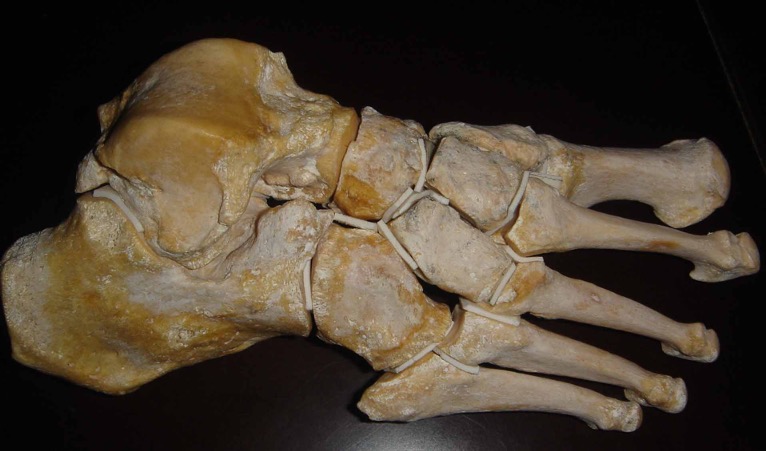What are we talking about?
The ankle joint includes two major bones: the tibia and the talus. Their surface is covered by cartilage, lubricated with synovial liquid, and everything is enclosed in an envelop called capsule. All these joint components allow the ankle to move, with a normal range of motion and without pain.
A joint wear mostly affecting the cartilage can disrupt this normal functioning. Pain and a loss of motion may appear.
Likewise other anatomical areas (hip, knee, shoulder, etc.), a total ankle arthroplasty is a joint implant which aim is to substitute the weak cartilage and bone. Thus, the patient can hope to recover a non-painful and movable ankle.
Ankle prosthesis components
The aim of surgery is to replace the worn joint’s elements: the cartilage and the bone connected to the cartilage.
Therefore, an ankle prosthesis has three components : the tibial part, the talar part, and an intermediate part called “insert”.
The tibial and talar implants are metallic, made of chromium and cobalt alloy. Their specific coating allows the bone to grow onto it. This ensures the anchorage of the prosthesis in the bone, without the use of surgical cement.
The “insert”, intermediate element between the tibia and the talus, is composed of ultra high molecular weight polyethylene. It is the central friction element between the two metallic implants, and designed to highly resist to friction wear.
Which pathologies?
Two main disease families may require an ankle prosthesis: osteoarthritis and inflammatory diseases.
Inflammatory diseases, in the first place of which rheumatoid arthritis, cause destruction of the joint and its components (cartilage, bone, synovial membrane). The disease specifically targets the articular elements and only a medical treatment can permanently stop the evolution. But in some cases, rarely nowadays, the disease is too advanced to remain compatible with a normal ankle function (painless mobility). Total ankle arthroplasty is then indicated.
Osteoarthritis represents the vast majority of cases. This is an articular wear from a mechanical origin and might be explained by numerous causes:
- Tibial fracture history
- Chronic ankle instability
- Rearfoot alignement abnormality
- Anterior and posterior conflicts
- etc…
Fortunately, among the affected patients, those who will effectively develop an arthritis requiring total ankle arthroplasty are exceptional. For instance, patients suffering from recurrent sprains are very numerous, but very rare are those who, among them, will really develop an ankle osteoarthritis.
Other points on this topic :




